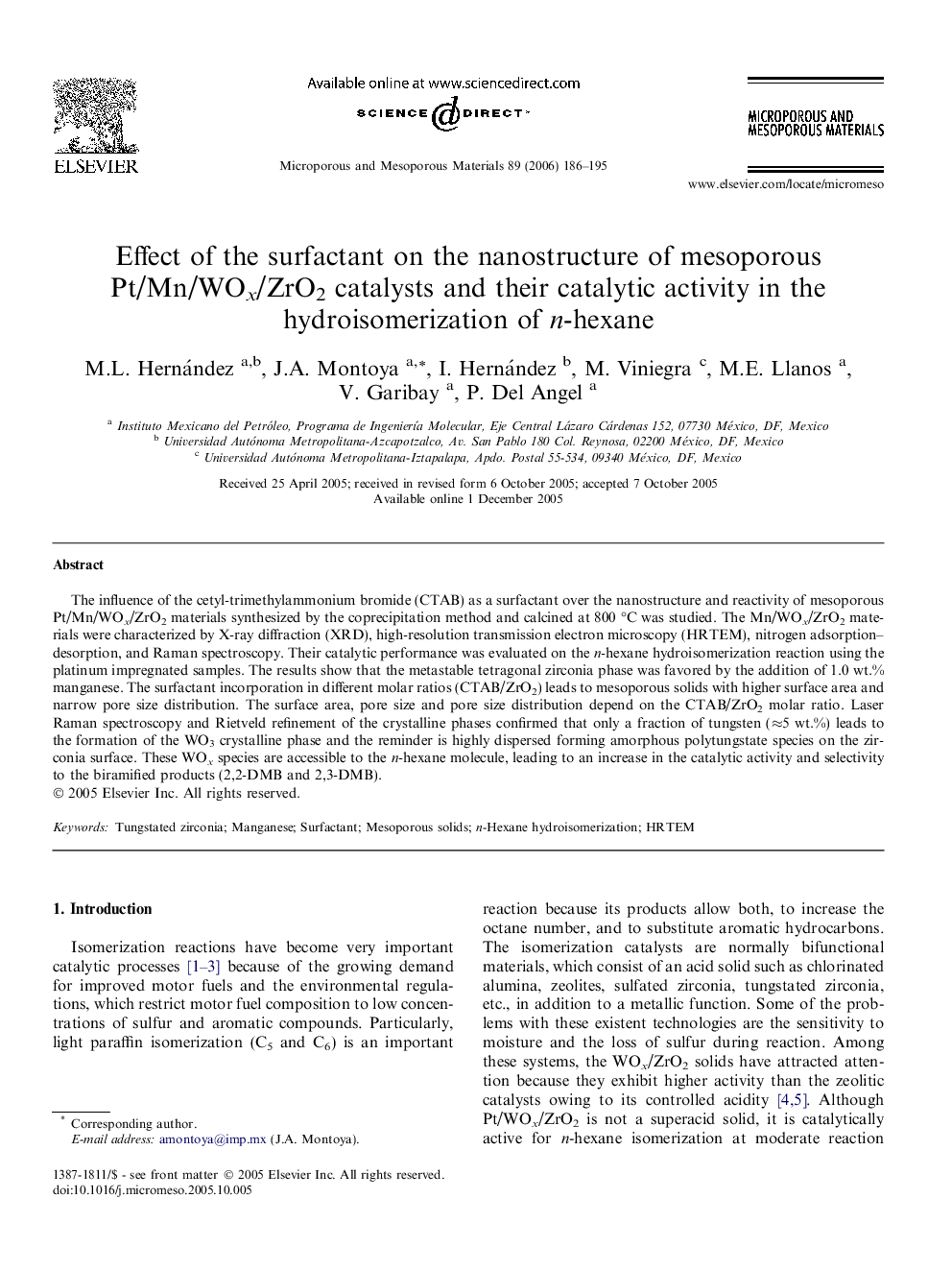| Article ID | Journal | Published Year | Pages | File Type |
|---|---|---|---|---|
| 76974 | Microporous and Mesoporous Materials | 2006 | 10 Pages |
The influence of the cetyl-trimethylammonium bromide (CTAB) as a surfactant over the nanostructure and reactivity of mesoporous Pt/Mn/WOx/ZrO2 materials synthesized by the coprecipitation method and calcined at 800 °C was studied. The Mn/WOx/ZrO2 materials were characterized by X-ray diffraction (XRD), high-resolution transmission electron microscopy (HRTEM), nitrogen adsorption–desorption, and Raman spectroscopy. Their catalytic performance was evaluated on the n-hexane hydroisomerization reaction using the platinum impregnated samples. The results show that the metastable tetragonal zirconia phase was favored by the addition of 1.0 wt.% manganese. The surfactant incorporation in different molar ratios (CTAB/ZrO2) leads to mesoporous solids with higher surface area and narrow pore size distribution. The surface area, pore size and pore size distribution depend on the CTAB/ZrO2 molar ratio. Laser Raman spectroscopy and Rietveld refinement of the crystalline phases confirmed that only a fraction of tungsten (≈5 wt.%) leads to the formation of the WO3 crystalline phase and the reminder is highly dispersed forming amorphous polytungstate species on the zirconia surface. These WOx species are accessible to the n-hexane molecule, leading to an increase in the catalytic activity and selectivity to the biramified products (2,2-DMB and 2,3-DMB).
